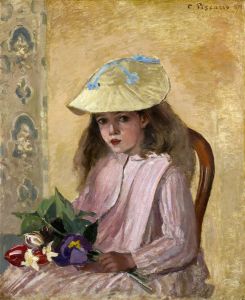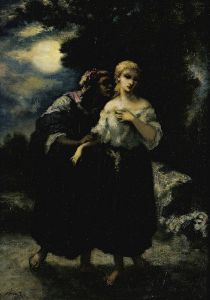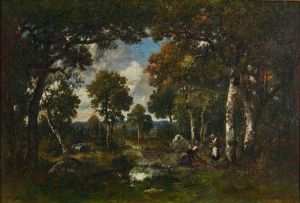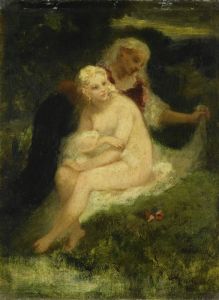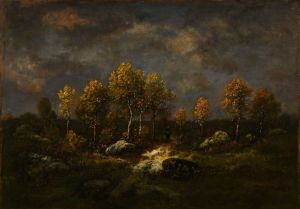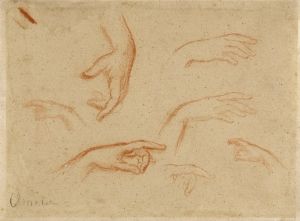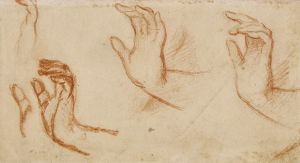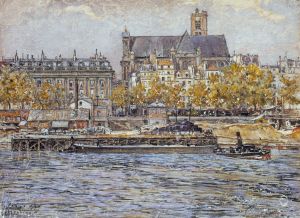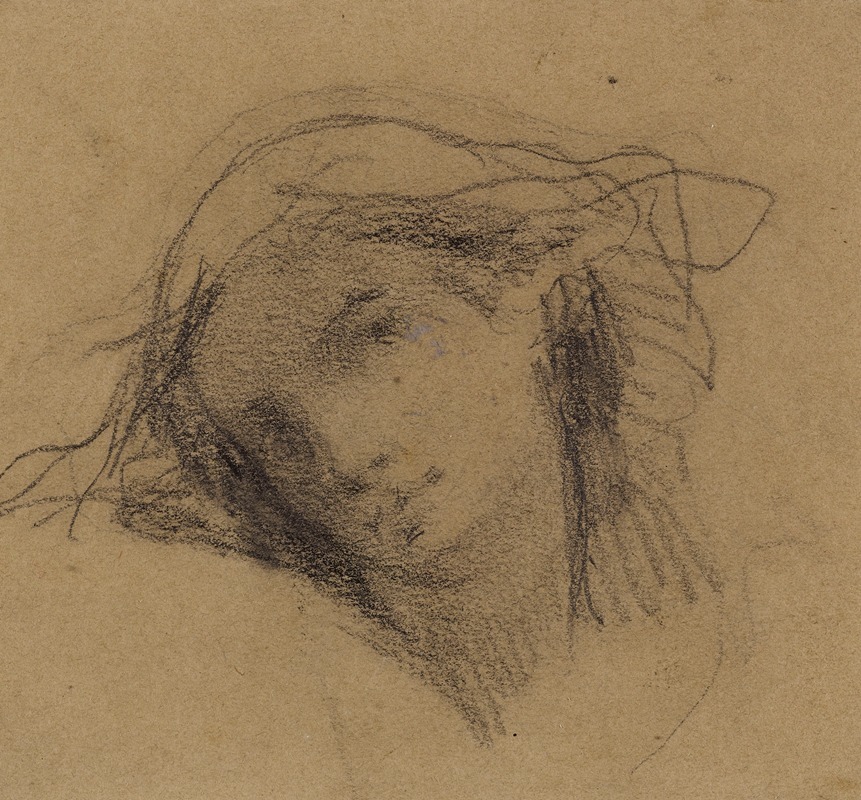
Tête de femme
A hand-painted replica of Narcisse-Virgile Diaz de La Peña’s masterpiece Tête de femme, meticulously crafted by professional artists to capture the true essence of the original. Each piece is created with museum-quality canvas and rare mineral pigments, carefully painted by experienced artists with delicate brushstrokes and rich, layered colors to perfectly recreate the texture of the original artwork. Unlike machine-printed reproductions, this hand-painted version brings the painting to life, infused with the artist’s emotions and skill in every stroke. Whether for personal collection or home decoration, it instantly elevates the artistic atmosphere of any space.
Narcisse-Virgile Diaz de la Peña was a prominent 19th-century French painter associated with the Barbizon School, a movement that emphasized naturalism and the depiction of rural landscapes. While Diaz de la Peña is primarily known for his landscapes, he also created a number of figure paintings, including portraits and genre scenes. One of his works in this category is "Tête de femme," which translates to "Head of a Woman."
"Tête de femme" exemplifies Diaz de la Peña's skill in capturing the human form and expression. Although specific details about this particular painting are scarce, it is consistent with his broader body of work, which often features rich color palettes and a focus on light and texture. Diaz de la Peña's figure paintings, including "Tête de femme," typically exhibit a romantic and sometimes exotic quality, reflecting the influence of earlier Romantic artists as well as his own unique style.
Diaz de la Peña was born in Bordeaux, France, in 1807 to Spanish parents. He began his artistic career as a porcelain painter before transitioning to oil painting. His early work was influenced by Romanticism, and he was known for his vibrant use of color and dramatic compositions. Over time, he became associated with the Barbizon School, a group of artists who settled in the village of Barbizon near the Forest of Fontainebleau. This group sought to break away from the formalism of academic art and instead focused on painting en plein air, or outdoors, to capture the natural world more authentically.
While Diaz de la Peña's landscapes are celebrated for their atmospheric qualities and lush depictions of nature, his figure paintings, such as "Tête de femme," reveal his versatility and interest in exploring different subjects. These works often feature women in various poses and settings, characterized by a sense of intimacy and immediacy. His ability to convey emotion and personality through portraiture is evident in these pieces, showcasing his talent beyond landscape painting.
Diaz de la Peña's work was well-received during his lifetime, and he exhibited regularly at the Paris Salon, the official art exhibition of the Académie des Beaux-Arts in Paris. His paintings were popular among collectors, and he enjoyed considerable success. Despite facing some criticism for his perceived lack of formal training, Diaz de la Peña's work was appreciated for its spontaneity and emotive power.
In addition to his artistic achievements, Diaz de la Peña was known for his generosity and support of fellow artists. He was friends with several notable painters of his time, including Théodore Rousseau and Jean-François Millet, and he often provided assistance to struggling artists.
Today, Diaz de la Peña's works, including "Tête de femme," continue to be appreciated for their contribution to 19th-century art. His paintings are held in various public and private collections around the world, and they remain a testament to his skill and artistic vision. While "Tête de femme" may not be as widely recognized as some of his other works, it nonetheless reflects the qualities that define Diaz de la Peña's oeuvre: a keen eye for detail, a vibrant use of color, and an ability to capture the essence of his subjects.









